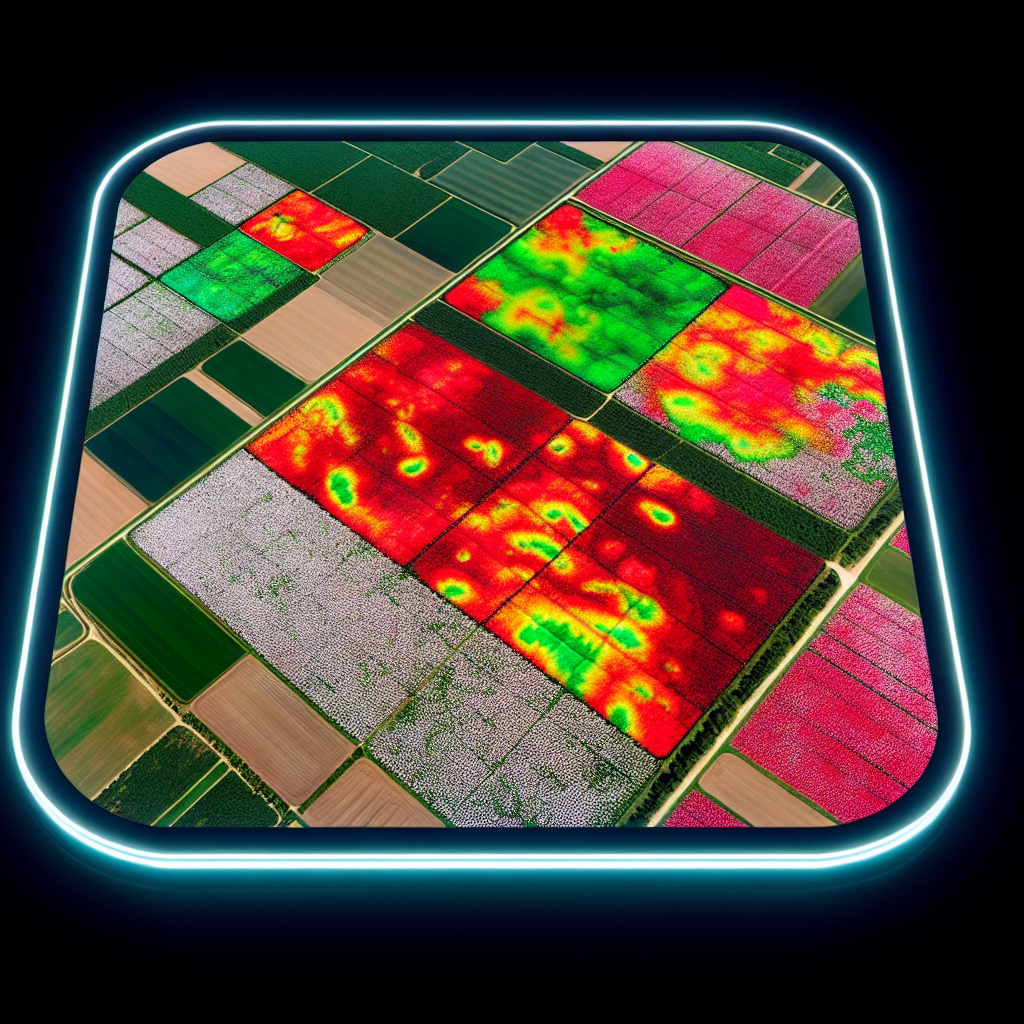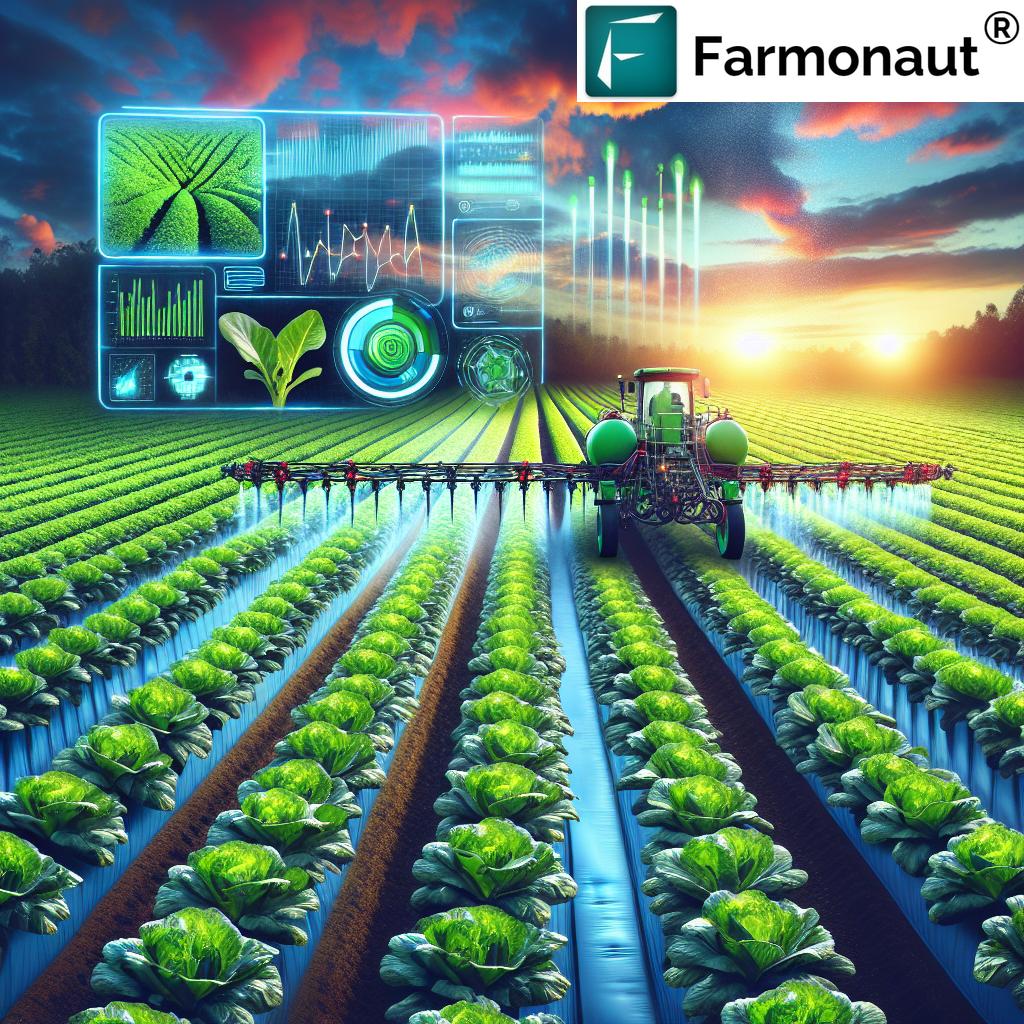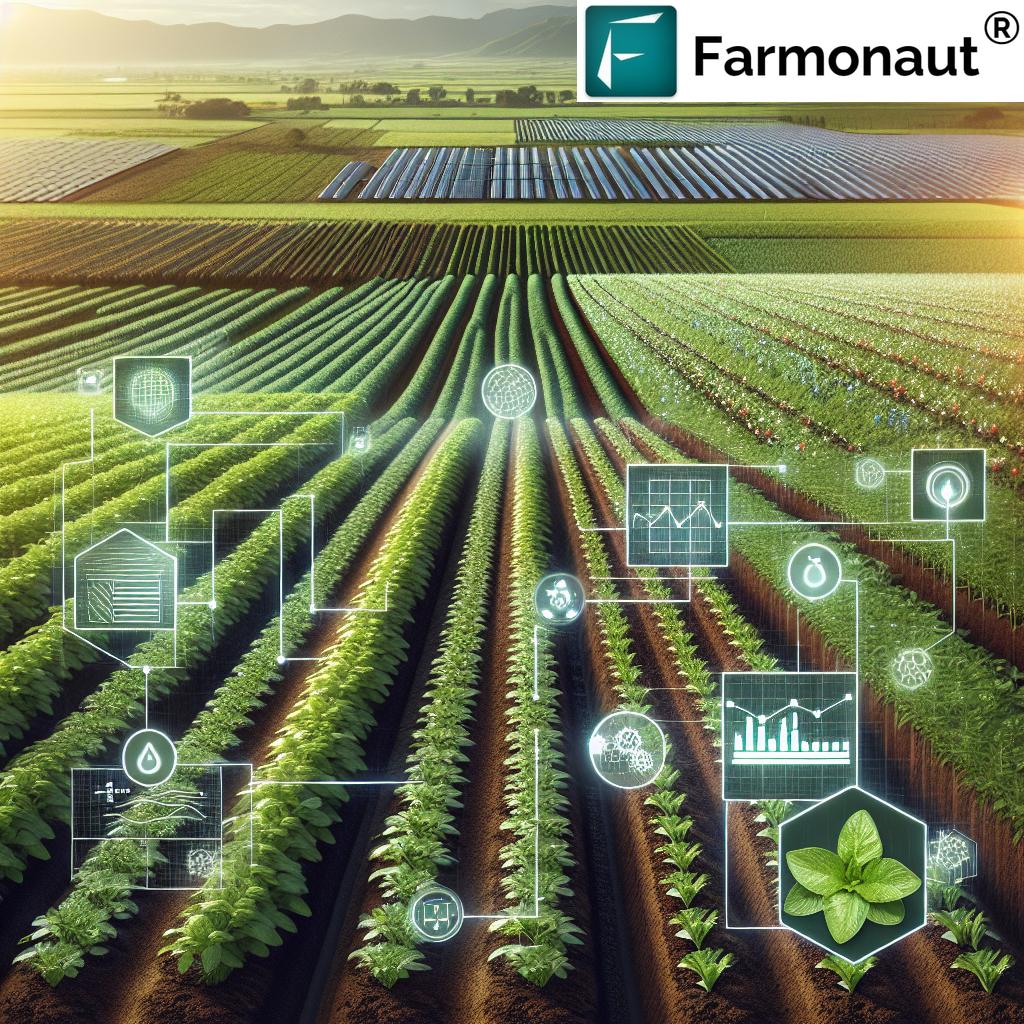Top 5 Advantages of Conservation Tillage & Fertigation 2025: Advancing Productivity & Sustainability in Modern Agriculture
“Conservation tillage can reduce soil erosion by up to 90%, significantly preserving topsoil and ecosystem health.”
Table of Contents
- Introduction: The Evolving Landscape of Sustainable Agriculture 2025
- 1. Advantages of Conservation Tillage
- 2. Advantages of Fertigation
- 3. Advantages and Disadvantages of Precision Farming
- 4. Advantages and Disadvantages of Sustainable Agriculture Practices
- 5. Benefits of Water Conservation in Modern Farming
- Comparative Table: Conservation Tillage vs Fertigation
- Smart Solutions by Farmonaut for Sustainable Agriculture
- Frequently Asked Questions (FAQ)
- Summary and Conclusion
Introduction: The Evolving Landscape of Sustainable Agriculture 2025
In today’s rapidly changing world, agriculture faces unprecedented challenges. With the pressing need to feed a growing population while preserving ecosystem health, sustainable and efficient farming methods have become more crucial than ever. Practices such as conservation tillage and fertigation stand out among the top innovative techniques revolutionizing modern agriculture.
As we move deeper into 2025, a holistic approach—integrating precision farming technologies, advanced methodologies, and sustainable management of resources—offers promising potential to reshape food production. In this comprehensive guide, we explore the advantages and sometimes the limitations of these practices, supporting both policymakers and farmers in building resilient, productive, and environmentally responsible agricultural systems.
“Fertigation increases fertilizer efficiency by 20-40%, promoting sustainable water and nutrient management in modern agriculture.”
1. Advantages of Conservation Tillage
Understanding Conservation Tillage
Conservation tillage refers to a series of farming practices where the degree of soil disturbance is reduced when compared to traditional plowing. Instead of turning over the entire upper soil layer, as is common in conventional tillage, conservation tillage practices—such as no-till, strip-till, and mulch-till—leave a significant portion of crop residue on the field’s surface. This minimized soil disruption forms the core principle behind conservation tillage’s environmental and productivity benefits.
Key Advantages of Conservation Tillage
- Enhanced Soil Health
Minimizing tillage helps maintain organic matter within the soil. The retention of crop residues from previous seasons boosts microbial activity and soil structure, increasing the soil’s ability to hold both water and nutrients.
- Soil Moisture Retention: By protecting the soil from direct sun and wind, conservation tillage reduces evaporation, improves moisture retention, and allows crops to thrive even during dry periods.
- Reduced Soil Erosion: Surface residues shield the soil from rainfall impact and surface runoff, lowering erosion risks by up to 90% in favorable cases—crucial in regions prone to erosion and desertification.
- Improved Nutrient Availability: Organic residues slowly decompose, returning nutrients to the earth and maintaining fertility for successive crops.
- Supports Climate Change Mitigation
By keeping organic material in the ground, conservation tillage increases the carbon sequestration capacity of agricultural lands. This helps mitigate greenhouse gas emissions from farming activities, directly addressing a significant source of agricultural carbon outputs. Adoption of conservation tillage in 2025 will increasingly support worldwide efforts toward meeting climate goals.
- Reduced Operational Costs
Conservation tillage practices generally reduce labor and fuel use, since farmers operate fewer passes over the field with heavy machinery. This means:
- Lower fuel expenditures as machinery does less work
- Reduced equipment wear and tear
- Boosted farm profitability, especially in regions where fuel prices are volatile
- Biodiversity and Ecosystem Benefits
Conservation tillage supports increased on-farm biodiversity by providing habitat for soil organisms, earthworms, and beneficial insects. These organisms improve nutrient cycling, pest control, and soil structure.
- Greater Farm Resilience
Improved soil structure, moisture retention, and organic matter content make farmlands more resilient to climate variability, supporting consistent yields even in unpredictable seasons.
Important Considerations
While the advantages of conservation tillage are substantial, some alterations in management are required. For instance, weed and pest control dynamics change—routine plowing can suppress some soil-borne pests and weeds, so alternative controls such as integrated pest management (IPM) become necessary. Additionally, transitioning to conservation tillage can require new equipment and skill development, but these investments generally yield positive returns in efficiency, productivity, and long-term soil health.
2. Advantages of Fertigation
What is Fertigation?
Fertigation is an advanced application method that integrates fertilization with irrigation, delivering water-soluble fertilizers directly to the root zone as crops are watered. This technological innovation stands apart from conventional fertilization that broadly applies nutrients to the soil surface or in bands.
Key Advantages of Fertigation in 2025
- Precision Nutrient Application: Fertilizer is precisely delivered where and when plants need it most, aligned with each stage of crop growth. This improves nutrient use efficiency and ensures robust, uniform crop growth.
- Water Conservation and Efficient Input Use: By combining the application of water and nutrients, fertigation reduces overall input use, helping conserve water and reducing wastage.
- Reduced Environmental Runoff: Traditional methods may cause fertilizer runoff, polluting groundwater and water bodies. Fertigation reduces runoff and leaching, lowering the risk of environmental contamination.
- Uniform Crop Growth and Increased Yields: Because fertigation applies nutrients uniformly with irrigation, crop stands are more uniform and overall yields are improved.
- Time and Labor Savings: Fertigation automates the process of both watering and feeding crops, reducing labor requirements for manual application of fertilizers.
- Resource Efficiency and Profitability: With improved fertilizer use, water savings, and lower labor costs, overall productivity and farm profitability rise.
How Fertigation Meets Modern Challenges
Regions facing water scarcity, fluctuating nutrient costs, and environmental regulations benefit significantly from fertigation systems. In 2025, these systems have become pivotal for large-scale vegetable, fruit, and high-value crop production—and are increasingly used in smallholder operations as well.
Need to integrate advanced irrigation and nutrient delivery data into your agri-tech platform? Farmonaut’s API offers seamless access to real-time satellite-based field insights, perfect for optimizing fertigation schedules and increasing input efficiency. For in-depth developer information, visit our Farmonaut Satellite Weather API Developer Docs.
Protect your produce authenticity by tracing all nutrition and input interventions—from irrigation to fertigation. Discover Farmonaut’s Product Traceability Solutions.
3. Advantages and Disadvantages of Precision Farming
Precision farming leverages data-driven methods, satellite imagery, AI, and GPS-enabled equipment to maximize productivity and sustainability. Understanding the advantages and disadvantages of precision farming helps guide effective adoption and risk management in 2025 and beyond.
Advantages of Precision Farming Techniques
- Resource Optimization: Precision farming reduces the use of water, fertilizers, and pesticides by enabling site-specific management. Only the necessary areas receive treatment, minimizing input costs and environmental impact.
- Increased Crop Yields and Quality: Timely intervention stemming from real-time data analysis enables farmers to act on stress signals, pest or disease outbreaks, and nutritional deficiencies, leading to improved yields and crop quality.
- Economic Efficiency: Reduced input waste translates into cost savings and potentially higher net profits, especially critical in volatile market environments.
- Sustainability: Fewer inputs means lower likelihood of runoff, residue build-up, and negative environmental impact, which promotes greater sustainability.
- Early Risk Detection: AI-powered remote sensing and real-time monitoring enable the early detection of crop stress, water scarcity, or disease outbreaks.
- Data-Driven Decision Making: Advanced analysis supports refined planning and precise execution, from seeding to harvest.
Disadvantages of Precision Farming
- High Initial Investment: Cutting-edge equipment, sensors, and digital infrastructure require significant upfront capital, sometimes out of reach for smallholders.
- Technical Skill Requirement: Successful implementation demands ongoing technical knowledge and periodic system updates, which may present barriers to entry, especially in less-developed regions.
- Reliance on Technology: System failures, data security issues, or cyber-attacks pose operational risks. Overreliance on digital systems can also lead to a decline in the application of traditional agronomic knowledge.
- Scale Sensitivity: The benefits of precision farming expand with scale, making it less attractive for very small operations unless tailored low-cost solutions are deployed.
Farmonaut’s satellite-powered insights and large-scale farm management platform enable the implementation of precision farming even for complex, multi-location farming businesses, by offering accessible, data-rich monitoring without the need for heavy investment in on-site infrastructure.
4. Advantages and Disadvantages of Sustainable Agriculture Practices
Sustainable agriculture is defined by its integration of ecological, social, and economic goals to ensure the long-term viability of food production while preserving resources for future generations. As we look towards 2025, the advantages and disadvantages of sustainable agriculture must be considered in the context of varied farm systems, global food security, and climate resilience.
Advantages of Sustainable Agriculture
- Ecological Balance: Sustainable practices prioritize soil regeneration, carbon sequestration, and diversified agro-ecosystems, enhancing biodiversity and supporting beneficial organisms.
- Improved Soil Health: Practices such as crop rotation, intercropping, organic soil amendments, and conservation tillage improve soil structure, fertility, and water retention.
- Reduced Chemical Dependency: A focus on natural pest controls, integrated nutrient management, and organic amendments lowers reliance on synthetic agrochemicals, improving the safety of food and the environment.
- Climate and Market Resilience: Diverse and integrated production systems are less vulnerable to climate shocks and market volatility, supporting stable rural livelihoods.
- Long-Term Productivity: Sustainable agriculture maintains productive potential for future generations, ensuring food security amid changing global demands.
Disadvantages of Sustainable Agriculture
- Yield Gap in Early Years: Particularly during transition, yields may lag compared to highly intensified conventional practices, though this often equalizes over time with improved soil health.
- Knowledge and Skills Intensive: Successful sustainability requires new skills, continuous learning, and often a change in management mindset and routines.
- Resource and Labor Input: Some sustainable practices are more resource or labor-intensive, especially when mechanized solutions are not available or affordable.
- Market Access and Profitability: Eco-friendly produce may not always command a price premium sufficient to offset additional investments, especially in highly competitive global markets.
Our team at Farmonaut believes that sustainability is best achieved through the integration of satellite-based carbon footprint monitoring and blockchain traceability, empowering agricultural businesses to verify, document, and communicate best practices in environmental stewardship.
5. Benefits of Water Conservation in Modern Farming
Water is agriculture’s most vital input, and water conservation has moved to the forefront in modern and future farming due to escalating global water scarcity and changing climatic conditions. The benefits of water conservation go far beyond simple resource savings, creating resilient, sustainable, and productive farming systems.
Top Benefits of Water Conservation in Agriculture
- Resource Efficiency and Cost Savings: Techniques such as drip irrigation, soil moisture monitoring, and rainwater harvesting can reduce water usage by up to 50%. This lowers both direct irrigation costs and the ancillary costs related to pumping and energy consumption.
- Enhanced Crop Resilience: Managing and optimizing irrigation ensures that crops receive water only when needed, reducing the risk of both drought stress and waterlogging.
- Soil Health and Yield: Properly calibrated water use supports soil structure, prevents salinity buildup, and helps maintain high levels of soil fertility, thus directly affecting crop productivity.
- Reduced Environmental Degradation: Efficient water use prevents excessive withdrawal from aquifers and the surface water system, maintaining natural habitats and groundwater levels and helping to protect biodiversity.
- Mitigation of Pollution: By ensuring that less water runs off fields, water conservation reduces the risk of pesticide and nutrient pollution entering local waterways.
Farmonaut’s NDWI (Normalized Difference Water Index) remote sensing technology provides farmers and agribusinesses with precise, satellite-based water status data, enabling targeted irrigation, maximizing water savings, and preventing crop losses.
Comparative Table: Conservation Tillage vs Fertigation (2025)
| Advantage / Benefit | Conservation Tillage (Estimated Impact) | Fertigation (Estimated Impact) | Relevant Quantitative Data |
|---|---|---|---|
| Water Conservation | Limits evaporation, increases retention | Optimizes water use; integrates with irrigation | Up to 30% water saved (conservation tillage), 40% (fertigation) |
| Labor Requirement | Reduces field labor vs. traditional tillage | Automates fertilization, further lowers labor | 20% labor reduction (conservation), 20-30% drop (fertigation) |
| Soil Health Improvement | Major positive impact by minimizing disturbance | Indirect impact via reduced runoff | Soil health score increase: 1.5–2x (tillage) |
| Fertilizer Efficiency | Improved, but indirect benefit | Direct, significant benefit; less wastage | 20-40% efficiency gain (fertigation) |
| Productivity Gains | Stabilizes yields, improves resilience | Enables yield increases, especially in water/soil-stressed regions | Yield increase: up to 15% (tillage), 20% (fertigation) |
“Fertigation increases fertilizer efficiency by 20-40%, promoting sustainable water and nutrient management in modern agriculture.”
Smart Solutions by Farmonaut for Sustainable Agriculture
Farmonaut is committed to making advanced technology affordable and accessible, empowering agriculture with actionable data and tools for implementing conservation tillage, fertigation, and water conservation practices:
- Satellite-Based Real-Time Crop Health Monitoring: Our NDVI, NDWI, and multispectral analytics provide timely insights into soil moisture, crop vigor, and field management needs.
- AI-Driven Advisory: Jeevn AI (via Farmonaut mobile & web apps) offers data-backed recommendations for water, fertilizer, and pest management at all crop growth stages.
- Blockchain-Based Traceability: Enhance transparency and customer trust with traceability solutions documenting every intervention, from tillage to fertigation.
- Environmental Impact Monitoring: Measure farm carbon footprints to document conservation tillage outcomes and comply with evolving sustainability benchmarks.
- Optimized Resource Management: With Fleet and Resource Management, automate fleet tracking, logistics, and machinery usage, driving down fuel and labor costs in conservation tillage-based operations.
- Access to Financing: Satellite-based verification supports crop loan and insurance applications, de-risking new technology adoption in sustainable farming systems.
Frequently Asked Questions (FAQ)
What are the main advantages of conservation tillage for soil health?
Conservation tillage maintains organic matter, boosts soil microbial activity, reduces erosion, and improves moisture retention, leading to improved soil structure, nutrient cycling, and resilience amid climate variability.
How does fertigation support sustainable agriculture in 2025?
Fertigation enables precise, timely nutrient application and integrates fertilization with irrigation, leading to increased fertilizer use efficiency, reduced environmental runoff, and water conservation. It also helps in achieving uniform crop growth and higher yields.
What are common challenges in adopting precision farming?
Challenges include high initial investments, skill requirements, dependency on technology infrastructure, and data security concerns. However, platforms like Farmonaut lower entry barriers by providing affordable, satellite-based solutions and ongoing support.
Can conservation tillage and fertigation be integrated for greater benefits?
Yes, integrating both practices maximizes water and nutrient efficiency, improving soil health, reducing input costs, and enhancing resilience and sustainability of the whole farming system.
How do Farmonaut’s solutions assist with sustainable farming?
Our platform combines satellite imagery, AI advisories, and blockchain traceability to deliver actionable insights, optimize resource use, document sustainable practices, and provide access to financing for farmers and agribusinesses.
Summary and Conclusion: Embrace the Future of Agriculture
As we advance through 2025 and beyond, the priorities for global agriculture are clear: increase productivity to meet rising food demands, preserve environmental integrity, and build resilient farming systems able to withstand evolving climate and resource challenges. The advantages of conservation tillage and the advantages of fertigation, enhanced by precision digital technologies and deep sustainability principles, offer a clear path forward.
While each approach brings its own strengths and limitations, their effective, context-sensitive integration—supported by cutting-edge, affordable technology such as Farmonaut’s platform—will guide farmers and policymakers toward a more secure, sustainable, and profitable agricultural future.












